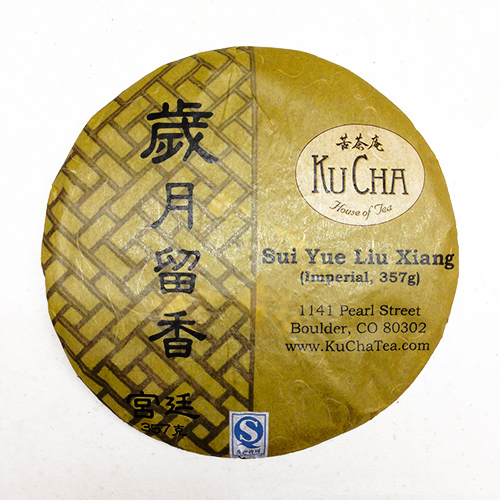Honor Earth Month By Digging Around in Earthy Teas
Some fine teas, like Kukicha green tea from Japan, taste pleasingly grassy. Others are malty; assams from India capture much in the way of bold flavor. The list of flavor profiles is long. Many compare tea’s myriad complexities to those found in wine.
And then there’s the earthy teas. Just as red wines from the Burgundy region of France often invite comparisons to things like mushrooms, forest floor and soil, so do some teas. The earthiest of teas? The pu-erhs and “dark” teas.
As we finish the first full week of Earth Month, it’s time to explore the fermented, funky, singular teas that draw legions of fanatics and collectors. Earthy teas are about more than flavor, however. While all tea delivers health benefits to sippers, pu-erhs and dark teas boost vitality with exceptional oomph. The teas’ body-bettering qualities revolve in part around the fermentation process.
The teas we are about to explore combine the environmental advantages of small-scale tea farming with the artisanship that goes into tea fermentation and aging. When stored properly — Colorado’s dry climate is conducive to long and successful aging — fermented teas like these ripen and grow more complex as they age. Just like fine wine. And perfect for Earth Month.

Earthy Tea: Sui Yue Liu Xiang
In Chinese this tea’s name means “The Fragrance of the Age,” which comes across as a bit of a riddle. What is the fragrance of the age? Well, it’s the aroma that rises from this aged tea, a fragrance that evolves as the tea grows older.
This pu-erh, crafted in Yunnan Province’s LinCang County, is considered Imperial or “Gong Ting” grade pu-erh, meaning it is especially high-quality. The process behind making ripe pu-erh is called “Wo Dui” or 渥堆“, which translated means “wet piling.” This approach to fermenting tea involves piling up the sun-dried Mao Cha (or “raw tea”) in a humid, warm warehouse with good ventilation. Workers then spritz it with water periodically.
Along the way they constantly monitor the pile, stirring it to release excess humidity and monitoring the fermentation process. Over the course of about three months of fermentation, the once-green tea turns crimson. And brewed, the distinct cooling and bitter flavors and mouthfeel associated with green tea become warm, smooth and earthy.
Once brewed, Sui Yue Liu Xiang broadcasts notes of pipe-tobacco as well as citrus. It’s earthy, too! Like other fine pu-erhs, this tea benefits from multiple infusions, as many as a dozen when brewed gong-fu style.

Earthy Tea: Tibetan tea
“I’d rather live three days without food than living one day without tea.” That’s an ancient Tibetan saying that illustrates the centrality of tea to life among Tibetans.
Google “Tibetan tea” today and you’ll encounter more then 80,000 references to “butter tea,” the style of tea sipped in the mountain nation. Fermented yak milk — Tibetan butter — stands as a key ingredient. The drink? Fermented tea leaves, yak butter, water and salt.
Tibetans drink an estimated 60 cups a day of their favorite beverage. That’s a lot of yak butter!
Our Tibetan tea skips the yak bit, as well as the salt. It’s all about the tea here at Ku Cha. The style of Camellia sinensis used by Tibetans is similar to pu-erh, only Tibetan preparations of fermented tea, like the version we offer, often combine leaves with twigs. Similar to pu-erh, artisans form the tea into shapes for aging; in Tibet, it’s normally a brick.
With the addition of twigs to the tea, our Tibetan tea is markedly earthy. Have you tried it? If not, Earth Month is a winning parade of days to give it a shot. It’s delicious.

Earthy Tea: Tiger Mountain
Most tea comes from cultivated tea bushes — rows of shrubs on agricultural fields yielding leaves, buds and blossoms for farmers. But our Tiger Mountain, which is harvested near Tiger Mountain in Yunnan Province’s LinCang County, comes from wild tea trees. Just like its namesake, the tiger, this tea is wild.
Tiger Mountain brews bright and complex, with an arresting combination of earthy bitterness and sweetness. Pear? The tea is well-known for offering hints of the fruit’s unique flavor. The dynamic balance between earthiness and pear-sweetness provides Tiger Mountain with its notable Cha Qi, or tea energy. This pu-erh, from 2017, is an excellent candidate for further aging. Happy Earth Month, Ku Chas! Our advice? Honor April with time spent in nature, treading lightly, looking for ways to volunteer or donate towards earthy-friendly pursuits and investigating tea’s earthy side.

